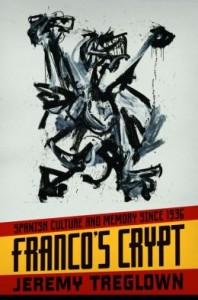New book challenges cultural wasteland notion of Franco Spain
 In his new book, Franco’s Crypt, British biographer Jeremy Treglown challenges the idea that during the years of the Franco regime Spain was a intellectual and cultural wasteland. Mr. Treglown writes about subversive elements in the arts. Many paintings, books, and other works of arts in Spain, he argues, used symbolism, hyper realism, and other hidden codes to outwit the censors. Mr. Treglown also shows how mediocre artists often betrayed their more talented colleagues in order to further their own careers.
In his new book, Franco’s Crypt, British biographer Jeremy Treglown challenges the idea that during the years of the Franco regime Spain was a intellectual and cultural wasteland. Mr. Treglown writes about subversive elements in the arts. Many paintings, books, and other works of arts in Spain, he argues, used symbolism, hyper realism, and other hidden codes to outwit the censors. Mr. Treglown also shows how mediocre artists often betrayed their more talented colleagues in order to further their own careers.
“If one of the ways we define the goodness of good art is its openness to a range of interpretations,” Mr. Treglown writes, “it follows that the best art will cause censors the most difficulties.”
Francoists criticized artists like the “satanic” Picasso or “infantile” Miró. Also frowned upon were styles like Modernism which was considered to be an inimical of classical traditions and even the Spanish national identity.
According to the New York Times review, which can be found here, “Mr. Treglown illustrates Franco’s disdain for art in an anecdote from a national biennial. Standing before a mixed piece by Antoni Tàpies with veiled political messages, a nervous official explained, ‘Excellency, this is the revolutionaries’ room.’ To which Franco responded cheerfully, ‘As long as this is how they carry out the revolution.'”












